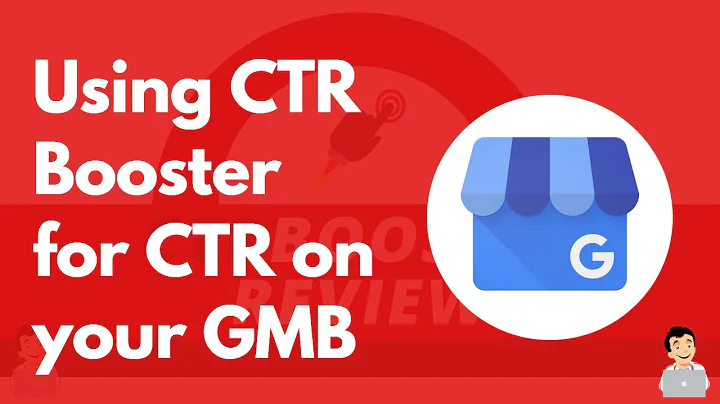The Ultimate Shopify Launch Checklist
Table of Contents:
- Introduction
- Website Functionality
- Cross Browser Compatibility
- Mobile-Friendly Design
- Testing Header and Footer Links
- Shopify Settings
- Business Settings
- Payment Setup
- Shipping Settings
- Tax Settings
- Product Pages
- Checking Individual Product Details
- Verifying Inventory
- Legal Pages
- Shipping Page
- Returns and Refunds Page
- Terms and Conditions Page
- Privacy Policy Page
- Reviewing Apps
- Favicon
- Reviewing Checkout
- Testing Contact Form
- Going Live
Article:
Ultimate Launch Checklist for Shopify E-commerce Store
Launching an e-commerce store on Shopify is an exciting endeavor. However, before you go live, it's crucial to ensure that everything is set up correctly to ensure a smooth and successful launch. In this article, we present the ultimate launch checklist for your Shopify e-commerce store, covering all the important aspects to check and optimize for a seamless launch.
1. Introduction
Before diving into the checklist, it's essential to understand the importance of thorough preparation before launching your e-commerce store on Shopify. Taking the time to review and optimize various aspects of your website and settings ensures a positive user experience and sets the foundation for future success.
2. Website Functionality
The first step in the launch checklist is to ensure your website's functionality. Perform a thorough check on different devices, including desktops, smartphones, and tablets, to guarantee optimal compatibility. Use Google Chrome's feature to test your e-commerce store on various device sizes, ensuring it appears and functions flawlessly.
Cross Browser Compatibility
It's crucial to assess your website's compatibility across different browsers, such as Safari, Chrome, Firefox, and even Internet Explorer. Each browser may display elements differently, and checking their compatibility ensures a consistent experience for all users.
Mobile-Friendly Design
With the increasing number of users accessing the internet through mobile devices, it's essential to prioritize mobile-friendliness. Confirm that your website looks visually appealing and functions seamlessly on mobile devices. Pay attention to responsive design, ensuring smooth navigability and readability.
Testing Header and Footer Links
Often overlooked but significant, checking and double-checking your header and footer links is a critical step. Broken links can hamper user experience and may lead to missed opportunities. Make sure all links are working correctly, guiding users to the desired destinations.
3. Shopify Settings
Next, it's time to review and optimize your Shopify settings to ensure seamless operations and customer satisfaction.
Business Settings
Review and confirm that your business settings, including customer service and website admin email addresses, are accurate. Any inquiries or notifications should reach you promptly, so double-checking these settings is vital.
Payment Setup
Verify the setup of your payment gateway and ensure it's functioning correctly. Test transactions to confirm that customers can complete purchases smoothly. Additionally, consider installing other payment gateways, such as PayPal, if applicable to your business model.
Shipping Settings
Thoroughly review and configure your shipping settings to align with your specific business requirements. Ensure that the shipping methods and pricing accurately reflect how you ship products to customers. It's also crucial to match your shipping settings in Shopify with those in Google Merchant Center, especially if running Google Shopping campaigns, to prevent any potential suspensions.
Tax Settings
Check your tax settings and ensure they align with the tax regulations of the locations where you are selling your products. Accurate tax settings are crucial for compliance and customer trust.
4. Product Pages
One of the most critical aspects of your e-commerce store is the product pages. Take the time to meticulously review each individual product page to ensure accuracy and optimize the user experience.
Checking Individual Product Details
Inspect every aspect of your product pages, ensuring correct titles, accurate images, and enticing descriptions. Double-check that each product has the right images associated with it, along with accurate and engaging descriptions that highlight the unique features and benefits of your products.
Verifying Inventory
If you track inventory within Shopify, it's crucial to review and update the stock levels to avoid any overselling or disappointing customers. Ensure that your inventory records are up to date and match the number of products you have available.
5. Legal Pages
Creating a level of trust and transparency with your customers is paramount. Having proper legal pages on your website provides important information about shipping, returns, and overall store policies.
Shipping Page
Create a dedicated shipping page on your website that outlines your shipping methods, estimated delivery times, and any applicable charges. Be clear and transparent, providing customers with all the necessary information.
Returns and Refunds Page
Addressing returns and refunds is crucial for customer satisfaction. Clearly communicate your return policy, including details about return windows, conditions, and refund procedures. Make it easy for customers to understand how they can initiate a return or ask for a refund.
Terms and Conditions Page
Your terms and conditions page should outline the rules and regulations that govern the use of your website and the purchase of products. Cover areas such as intellectual property rights, disclaimers, and limitations of liability to protect both your business and customers.
Privacy Policy Page
In today's digital age, prioritizing privacy is essential. Create a comprehensive privacy policy page that details how you collect, use, and protect customer information. Address topics such as data security, third-party data sharing, and opt-out options.
Remember to customize these legal pages to align with your specific business practices and the policies you intend to implement.
Stay Tuned! Article Continued in Part 2






















